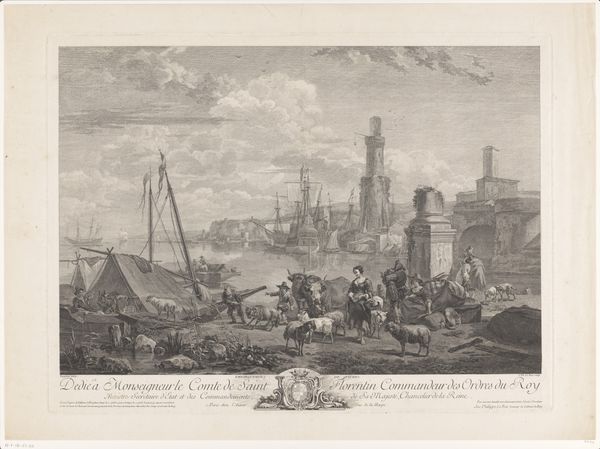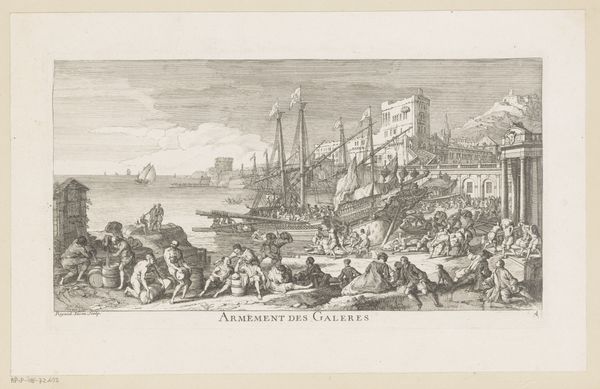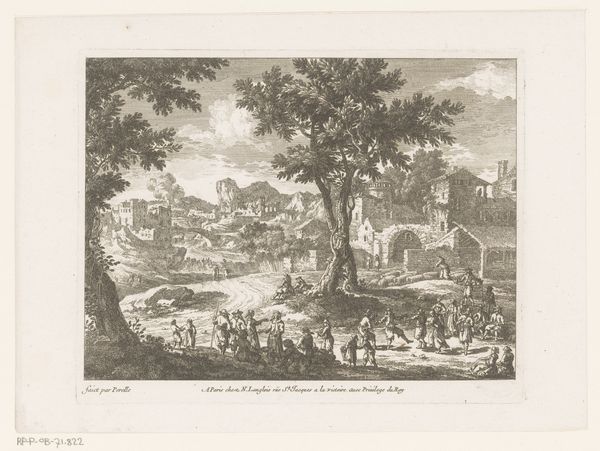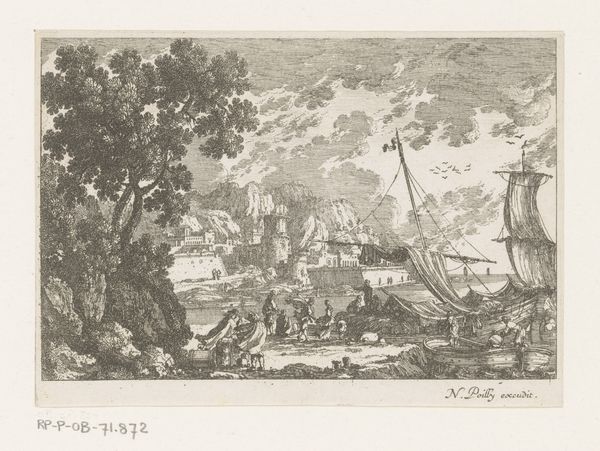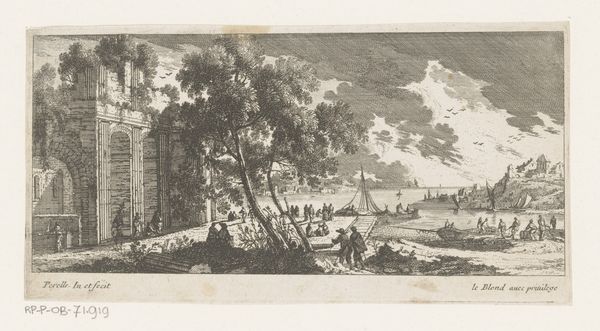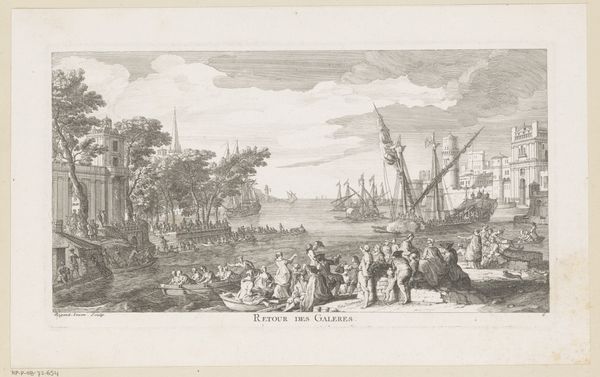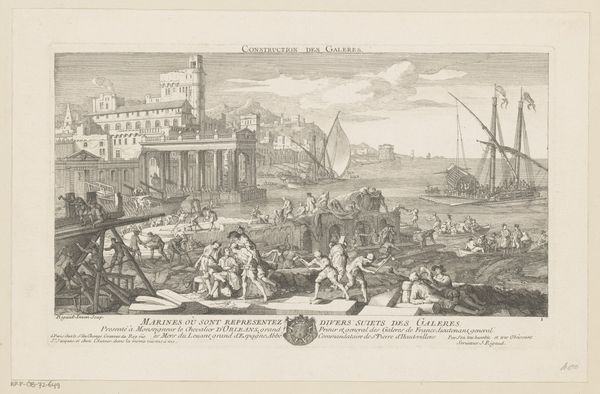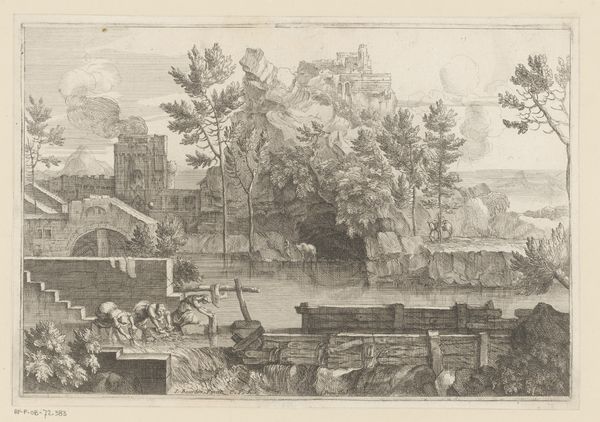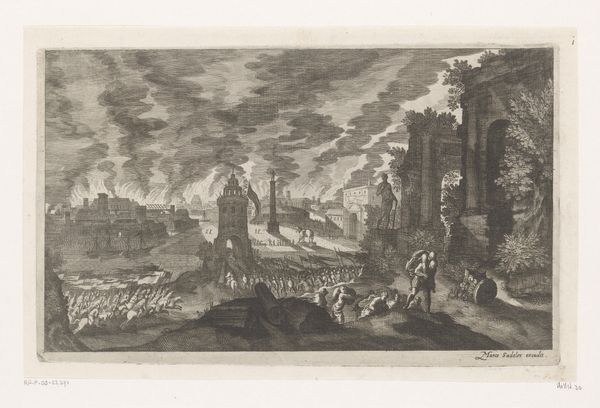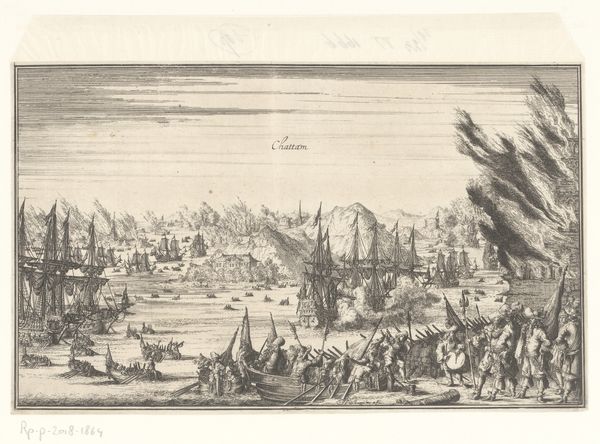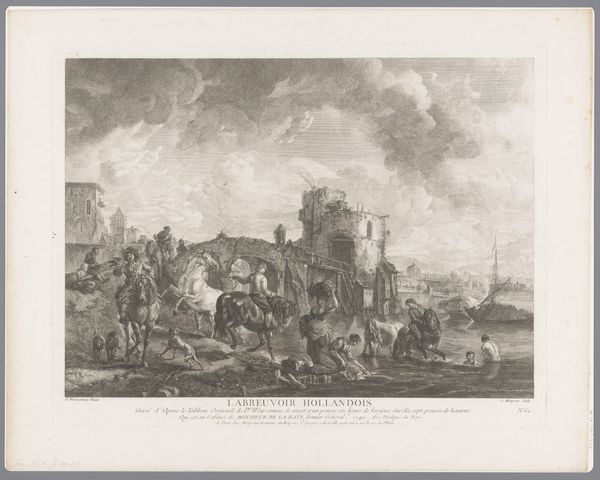
Gezicht op inschepen van galeien en kanonschot ter ere van hun vertrek 1720 - 1754
0:00
0:00
print, engraving
#
baroque
# print
#
cityscape
#
history-painting
#
engraving
Dimensions: height 197 mm, width 352 mm
Copyright: Rijks Museum: Open Domain
Editor: Here we have Jacques Rigaud's print, "View of the Embarkation of Galleys and Cannon Salute in Honor of Their Departure," created sometime between 1720 and 1754. It's such a busy scene, full of bustling figures and a real sense of celebratory energy! What aspects of this piece really capture your attention? Curator: The way Rigaud depicts this event gives us a glimpse into the socio-political theatre of the time. Notice how he’s not just showing the event itself, but framing it for public consumption. What do you think is the function of making and disseminating this image? Editor: Hmm, maybe to showcase naval power, or to commemorate an important voyage? Curator: Precisely. These prints often served as visual propaganda, reinforcing the power and prestige of the state. Rigaud meticulously captures the architecture, the ships, and even the fashion, all to project an image of order and grandeur. It’s fascinating how the booming cannon and the thronging crowds all become part of this carefully orchestrated display of authority. Editor: So it’s not just a historical record, but an active participant in shaping public opinion. Were these kinds of prints widely accessible? Curator: Good question. While not everyone could afford original artworks, prints like this were relatively accessible and widely distributed, making them a powerful tool for disseminating particular messages. Consider the potential audience – who would have likely viewed this print and what messages would they have received about the ruling powers? Editor: I guess I never really thought about how art could be used in this way. It really adds another layer to how I view it. Curator: Indeed. Understanding the historical context and the intended audience transforms our appreciation of the image, from a simple depiction to a complex commentary on power and representation. Editor: Thanks, seeing it as a form of political communication really opened my eyes. Curator: And I’m glad we explored how artistic production intersects with societal power dynamics; thinking this way helps art speak volumes about its own time.
Comments
No comments
Be the first to comment and join the conversation on the ultimate creative platform.
